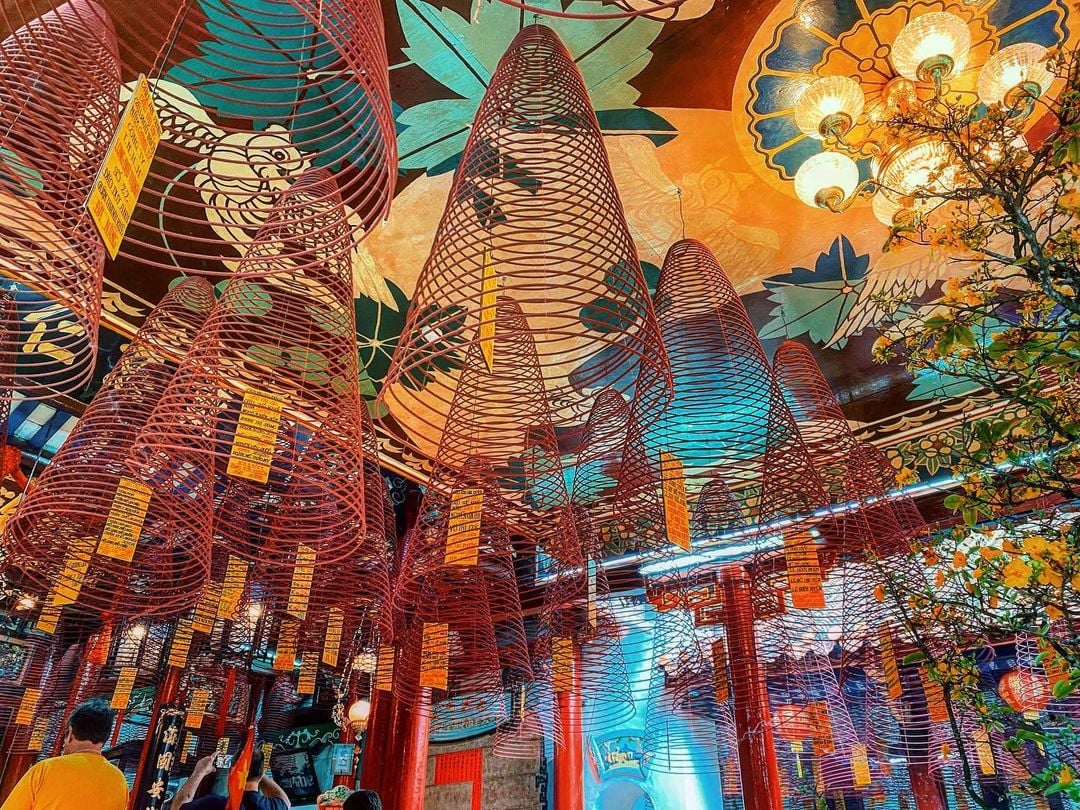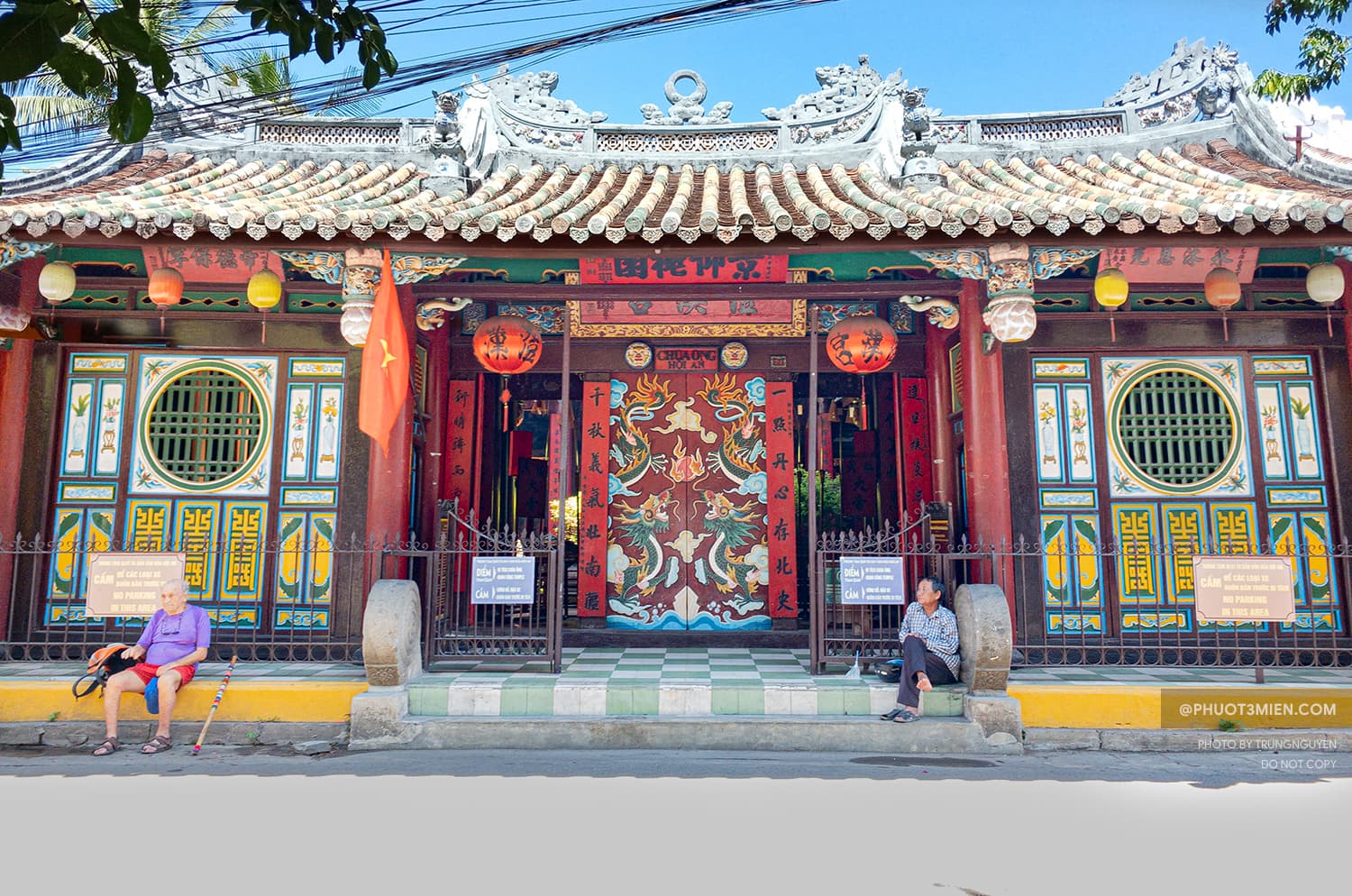Quan Cong Temple is a centuries-old spiritual treasure trove of Hoi An. Its superb architecture and exotic traditional festivals will undeniably captivate tourists visiting the Ancient Town of Vietnam.
As a traditional landmark, the Ancient Town of Hoi An – A UNESCO World Heritage Site – is well-known for its spiritual charms given the mysterious beauty and sacred shrines. Notably, Quan Cong Temple is one of the most famous holy sites with a long history, ensuring an unforgettable experience for those seeking architectural and cultural delights in Hoi An.

1. About Quan Cong Temple
1.1. History of Quan Cong Temple
Quan Cong Temple, also known as Ong Pagoda (Quan Công Miếu or Chùa Ông in Vietnamese), was established in 1653 by Chinese immigrants in Hoi An. The temple is a place of worship devoted to an esteemed Chinese military general – Quan Cong (全琮 – Guan Yu), known as Quan Van Truong (Quan Vu) in Vietnamese.

Since Quan Cong served as a talented military general and a martial master dedicated to the civil wars during the Three Kingdoms period in ancient China, he is honored as a God of War (Quan Thanh De Quan in Vietnamese). Quan Cong has been worshipped around East Asia. He is a symbol of loyalty, bravery, integrity, and justice. Legend has it that Chinese merchants came to Quan Cong Temple to sign contracts for loans because no one had the audacity to commit fraud in the presence of the deity.
The Ong Pagoda has been well-preserved after several restorations in the 20th century. The 370-year-old temple has been awarded a National Historic and Cultural Heritage since 1991.

1.2. Architecture of Quan Cong Temple
Unlike other ancient sites in Hoi An, Quan Cong Temple boasts an outstanding exterior depicting the characteristics of classical Confucian architecture.

The temple’s structure symbolizes the Han character “国”- “Quoc” which means country with four sections. It includes a front hall, right and left rows of houses, and the main shrine. These buildings are roofed with tubed enamel tiles, and their top edges are curved with sculptures of holy animals such as dragons and unicorns.
1.3. Precious antiques in Quan Cong Temple
Along with a dedicated design, Quan Cong Temple houses various valuable historic artifacts, such as honored ordinations, 30 horizontal lacquered boards inscribed with Han characters, a fable of Nguyen Nghiem (Father of Nguyen Du – a celebrated Vietnamese poet), and two paintings by Uong Si Cu and Nguyen Lenh Tan.

2. Quan Cong Temple – Location, ticket fees, and opening hours
- Address: 24 Tran Phu Street, Cam Chau Ward, Hoi An City, Quang Nam Province
- Opening hours: 8 AM – 5 PM
- Ticket fees: Free entry to Quan Cong Temple (Hoi An Ancient Town’s entrance fee is 150.000 VND/person for foreigners which includes 5 visiting sites)
How to get to Quan Cong Temple?
Hoi An Ancient Town is conveniently located in the city center. After entering the Ancient Town, you will immediately see the Japanese Covered Bridge (Chua Cau). From the bridge, you can find Tran Phu Town Center on the right side of Bach Dang street and opposite Nguyen Thi Minh Khai Street, take a 7-minute walk ahead, then you will see Chua Ong Hoi An at 24 Tran Phu Street.
3. Things to do at Quan Cong Temple in Hoi An
If you are seeking unique spots to take alluring photos, Quan Cong Temple is a dream destination for you. Its extraordinary design with ancient and colorful features is definitely remarkable to be captured.
Moreover, fascinating legends and historical events surrounding the temple will give visitors insights into the local culture and religious traditions.

As Quan Cong Temple is one of the most sacred shrines among Hoi An temples, many merchants and locals frequently come here to worship the general and make offerings. Tourists also can light incense and pray to deities for blessings and good luck.
In addition, visitors will have the chance to join exotic festivities at the temple. Annually, Ong Pagoda Hoi An holds special ceremonies for General Quan Cong on January 31st and June 24th in the lunar calendar.
On Lunar New Year (Tet Holiday), people often write their wishes with their full names, addresses, date of birth on joss paper and hang them on circular Chinese incenses.
